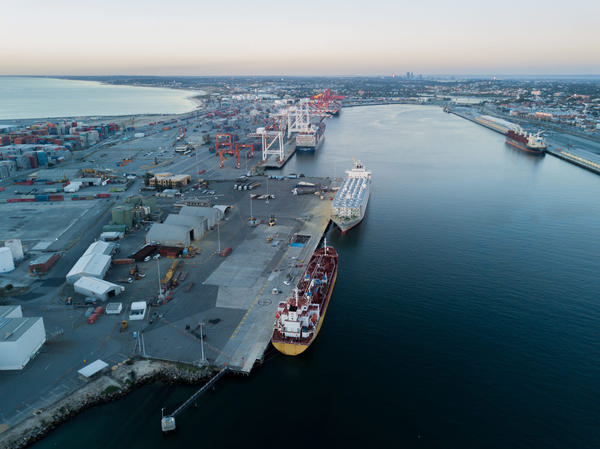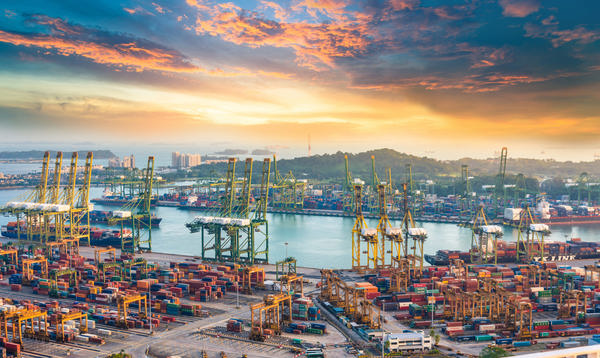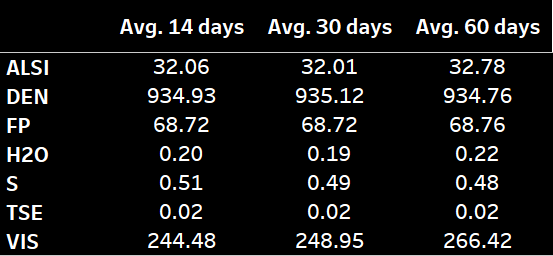East of Suez Market Update 28 Jul 2025
Prices in East of Suez ports have fallen, and bunker operations at all anchorages in Zhoushan have been suspended since Thursday due to adverse weather conditions.
 IMAGE: Aerial view of Zhoushan City, Zhejiang Province. Getty Images
IMAGE: Aerial view of Zhoushan City, Zhejiang Province. Getty Images
Changes on the day from Friday, to 17.00 SGT (09.00 GMT) today:
- VLSFO prices down in Zhoushan ($6/mt), Singapore ($5/mt) and Fujairah ($2/mt)
- LSMGO prices down in Singapore ($12/mt), Zhoushan ($11/mt) and Fujairah ($8/mt)
- HSFO prices down in Zhoushan ($14/mt), Singapore and Fujairah ($4/mt)
- B24-VLSFO at a $171/mt premium over VLSFO in Singapore
- B24-VLSFO at a $186/mt premium over VLSFO in Fujairah
Zhoushan’s VLSFO price has fallen by $6/mt over the weekend, marking the sharpest drop among the three major Asian bunker ports. Despite the decline, Zhoushan's VLSFO benchmark stands at a $7/mt premium over Fujairah, while it is almost at parity with Singapore.
Zhoushan's HSFO price has declined more steeply than its VLSFO price, widening the port's Hi5 spread by $8/mt to $91/mt today. However, this remains below the Hi5 spreads in Fujairah ($106/mt) and Singapore ($100/mt).
VLSFO supply in Zhoushan remains steady, with recommended lead times of 5–7 days, nearly unchanged from last week. HSFO delivery times are also stable at 5–7 days, similar to last week. LSMGO lead times remain consistent at around 5–7 days as well.
Bunker operations at both the inner and outer anchorages in Zhoushan have been suspended since Thursday due to rough weather, according to a source.
Bunkering at inner anchorages such as Xiushandong and Mazhi was suspended on Thursday, while operations at outer anchorages including Tiaozhoumen and Xiazhimen were halted earlier on Monday. Most bunker suppliers expect full operations to resume after 30 July, another source noted.
Brent
The front-month ICE Brent contract has declined by $0.34/bbl on the day from Friday, to trade at $69.06/bbl at 17.00 SGT (09.00 GMT).
Upward pressure:
The US securing a trade deal with the European Union (EU), along with the potential extension of a tariff pause with China, eased fears that higher tariffs might dampen economic activity and curb fuel demand, according to Reuters. These developments have contributed to upward pressure on Brent futures.
Oil prices received support “after the US signed a trade deal with the European Union on Sunday and was reported to be poised to extend the tariff truce with China by another 90 days during talks this week,” said Vandana Hari, founder of VANDA Insights.
Oil prices were supported “after the US and EU announced a trade deal, which will see most EU exports to the US facing a 15% tariff,” analysts at ING Bank shared a similar view.
Adding to the price support, the total number of rigs drilling for crude oil and natural gas in the US fell by two last week to 542 units, according to Baker Hughes.
Specifically, oil rigs dropped by seven to 415, while gas rigs increased by five to 122.
This overall decline has sparked some supply concerns, further contributing to upward pressure on oil prices.
Downward pressure:
The prospect of the Organization of the Petroleum Exporting Countries and its allies (OPEC+) further easing supply restrictions has exerted downward pressure on Brent futures.
Four OPEC+ delegates said last week that the group is unlikely to recommend any changes to the existing plan by eight member countries to increase oil output by 548,000 b/d in August, although another source noted it was still too early to determine, according to Reuters.
“The group may feel emboldened to go with yet another large supply hike for September, given that prices are holding up relatively well despite supply increases already announced in recent months,” commented two analysts from ING Bank.
Market watchers are closely awaiting the outcome of the OPEC+ meeting scheduled for later today.
Adding to the bearish sentiment, the US is preparing to issue new authorizations for key partners of Venezuela’s state-owned PDVSA—starting with Chevron—allowing them to operate under certain limitations and engage in oil swap agreements with the sanctioned OPEC nation, Reuters reported.
“The Trump administration announced last week it will allow Chevron to resume pumping oil in Venezuela,” said Daniel Hynes, senior commodity strategist at ANZ Bank.
This move has also contributed to downward pressure on oil prices.
By Tuhin Roy
Please get in touch with comments or additional info to news@engine.online

Contact our Experts
With 50+ traders in 12 offices around the world, our team is available 24/7 to support you in your energy procurement needs.




